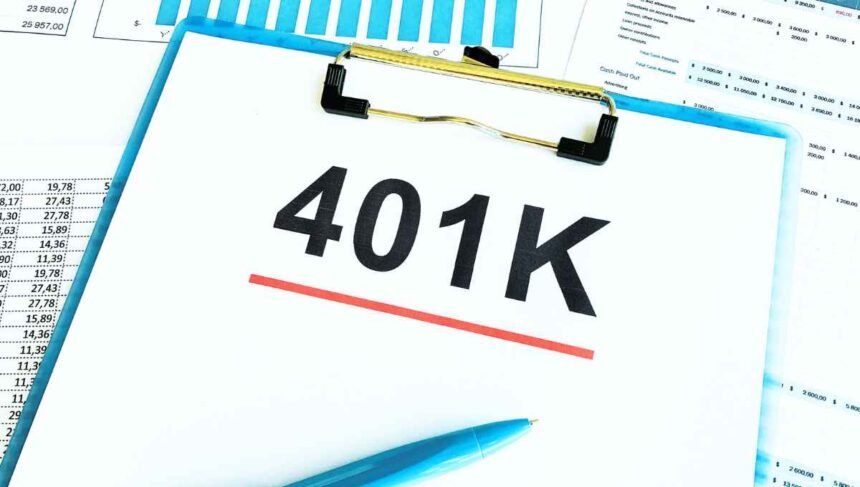What exactly is a 401k plan? If you’ve heard the term tossed around but still don’t understand how 401ks work, you’re not alone. These popular retirement savings accounts come with an alphabet soup of jargon that can be confusing to decode.
But unlocking the basics of 401k plans is key for bolstering your nest egg. A 401k allows you to squirrel away money in a tax-advantaged way, putting your retirement goals within closer reach. Learning the ins and outs now can set you up for a more financially secure future.
This comprehensive guide breaks down everything you need to know if you’re asking the question – what is a 401k and should I enroll in one? We’ll cover:
- What is a 401k Retirement Plan?
- 401k Plan Contribution Limits
- How Do 401k Plans Work? Tax Benefits and Vesting Policies
- Employer Matching 401k Contributions
- Investment Options: Stocks, Bonds, Mutual Funds, and Beyond
- When Can You Withdraw Money from a 401k?
- Rolling Over a 401k After Leaving a Job
- Pros and Cons of 401k Accounts
Follow along for a 401k crash course and learn how to harness this account’s potential.
What is a 401k Retirement Plan?
A 401k is an employer-sponsored retirement savings account that allows tax-deferred investing. The 401k was established in 1978 under section 401(k) of the Internal Revenue Tax Code, hence the name “401k.”
With a traditional 401k, money is taken directly from your paycheck and put into investments of your choosing. You don’t pay capital gains or dividend taxes on any growth of your investments each year. Instead, you pay ordinary income tax only when you make a withdrawal decades down the road in retirement.
Many companies offer 401k plans with matching contributions as an employee benefit. For example, your employer may match 50% of contributions up to 6% of your salary.
So if you earn $60,000 annually and contribute $3,600 (or 6%) to your 401k, your company would kick in an extra $1,800. This doubling of your money makes participating in your employer’s 401k plan a smart choice.
401k Plan Contribution Limits: How Much Can You Save?
The IRS sets limits each year on how much employees can contribute to 401k accounts. These maximums help keep these tax-incentivized accounts in check.
In 2023, the 401k contribution limit is $22,500 for those under age 50. Employees age 50 and older can make an extra $7,500 “catch-up” contribution beyond that.
That means if you’re over 50, you can sock away up to $30,000 in your 401k this year. And your employer’s matching dollars don’t count towards those IRS caps.
With the power of compound interest over decades, consistently maxing out 401k contributions each year can lead to a sizable nest egg. Even small, regular contributions to a 401k in your early career can add up.
How Do 401k Plans Work? Tax Benefits and Vesting
A 401k retirement plan’s tax-deferred status is what makes it a prime savings tool. Rather than owing capital gains or dividend income taxes each year, that liability gets kicked down the road.
You ultimately will owe ordinary federal and state income taxes on withdrawals in retirement. But ideally you’ll be in a lower bracket then without work wages.
One exception is if your 401k has a Roth account option. Roth 401k contributions won’t lower your current taxable income. But qualified withdrawals down the road will then be 100% tax-free.
Another key 401k feature is vesting. This refers to the process of earning ownership of your employer’s matching funds over time.
A typical 401k vesting schedule grants you 20% ownership of matched dollars after two years. Then another 20% vests every subsequent year until you’re fully vested after six years.
If you leave the company earlier, you forfeit the employer match portion you weren’t yet vested in. So vesting schedules incentivize employees to stick around to earn the full retirement boost.
Employer Matching Contributions: How Much Free Money?
One major 401k perk is receiving free extra funds through an employer match. Company matches commonly fall between 3% to 6% of your income.
So on a $50,000 salary, a 4% match would amount to $2,000 per year of essentially free money towards retirement. Over the course of a career and factoring investment growth, this adds up significantly.
Some employers also offer non-elective contributions (NECs). These entail companies automatically putting a certain percentage of your earnings into your account, regardless of whether you contribute.
Adding even 1% to 2% through an NEC can make a big difference long-term. So when comparing job offers’ compensation packages, look closely at the details of potential 401k employer contributions.
What Investment Options Do 401k Plans Offer?
Once money enters your 401k, you get to decide how it’s invested among the available offerings in your plan. Many 401ks provide a menu of mutual funds featuring stocks and bonds.
Target-date funds are a beginner-friendly choice that take guesswork out of investing. These diversified funds own a mix of equities and fixed income assets keyed to when you plan to retire.
For example, picking a 2050 target date fund means the fund automatically shifts to become more conservative over time. So as 2050 approaches, it dial backs on riskier stock holdings so you don’t take a big hit right before retirement.
Some 401k plans also allow investing directly in individual stocks. This lets you tailor your asset allocation more precisely based on your risk tolerance.
Certain employers are now offering access to sophisticated institutional funds from top asset managers. Perks like this that are exclusive to 401k plans can make them even more compelling over opening a regular IRA.
When Can I Withdraw Money from My 401k Account?
While 401k accounts are intended specifically for funding retirement, certain circumstances make early withdrawals possible. These options offer more access to your cash before age 59 1⁄2 but often come with downsides like taxes and penalties.
For starters, when leaving an employer you can withdraw your vested balance but will owe income taxes and potentially a 10% early withdrawal penalty. However, you can sidestep penalties by rolling over the assets into your new employer’s 401k or an IRA within 60 days.
Some additional scenarios allowing penalty-free 401k withdrawals before age 59 1⁄2 include:
- Permanent disability
- Paying large medical bills exceeding 10% of your adjusted gross income
- Making a first-time home purchase (up to $10,000 lifetime limit)
- Covering birth or adoption expenses (up to $5,000 per new child)
- Paying child support or alimony owed
- Covering IRS tax levies against the account
- Fulfilling military reservist distributions
This wider-than-you-think array of options provides some reassurance you can tap your 401k savings if severely needed even before typical retirement age.
Rollover 401k to an IRA or New Employer Plan When Leaving a Job
When you leave a job, a common question is what to do with your old 401k plan. In most cases, rolling over the funds into an Individual Retirement Account (IRA) or your new workplace plan allows you to maintain account tax benefits.
IRAs often enable more flexible investment choices compared to 401k plans. This makes them enticing for consolidating multiple old 401ks from various employers.
You can initiate direct rollovers by having your 401k administrator transfer the assets straight over to the new institution. This prevents potential taxes or penalties from kicking in.
Alternatively, indirect rollovers mean taking a distribution payable to yourself and re-depositing the lump sum into a new tax-advantaged account within 60 day rollover window. But missing that deadline can invalidate your rollover and trigger early withdrawal consequences.
Consult a financial advisor when navigating rollovers to understand all impacts to your situation. Rules around distributions, taxes, penalties, and more vary substantially based on personal factors.
Pros and Cons of 401k Retirement Accounts
Below is a quick rundown of key advantages and disadvantages related to 401k plans to round out your education:
Pros:
- Tax-deferred investing leads to faster growth
- Variety of investment options like stocks and bonds
- Employer matching contributions is free extra money
- Easy automatic contributions from paycheck
- Typically lower fees than IRAs due to institutional pricing
- Creditor protection shields assets from bankruptcy
Cons:
- Limited control over investment choices compared to IRAs
- Cash tied up until age 59 1⁄2 outside certain exceptions
- Required minimum distributions (RMDs) dictate withdrawing money every year starting at age 72 to avoid tax penalties
- Early withdrawals often prohibited without penalties
Now You Know – Welcome to Your 401k Crash Course!
And there you have it – a comprehensive overview explaining 401k retirement accounts! From contribution limits to employer matches, investment choices to withdrawal rules, you now can navigate 401k basics with confidence.
Signing up for a 401k is a savvy starting point for securing your financial freedom. But don’t stop there. Continue expanding your money strategy arsenal with other tools like HSAs, IRAs, taxable brokerage accounts, and beyond.
Saving for the future may not always sound glamorous today. But sticking to smart planning now means you ultimately can spend time pursuing whatever brings you joy in your later chapters rather than just working to survive.
Ready to roll up your sleeves and build that nest egg? Why wait! Talk to your employer about getting started with your 401k plan today. The time is now to take control and set yourself up for success tomorrow.





